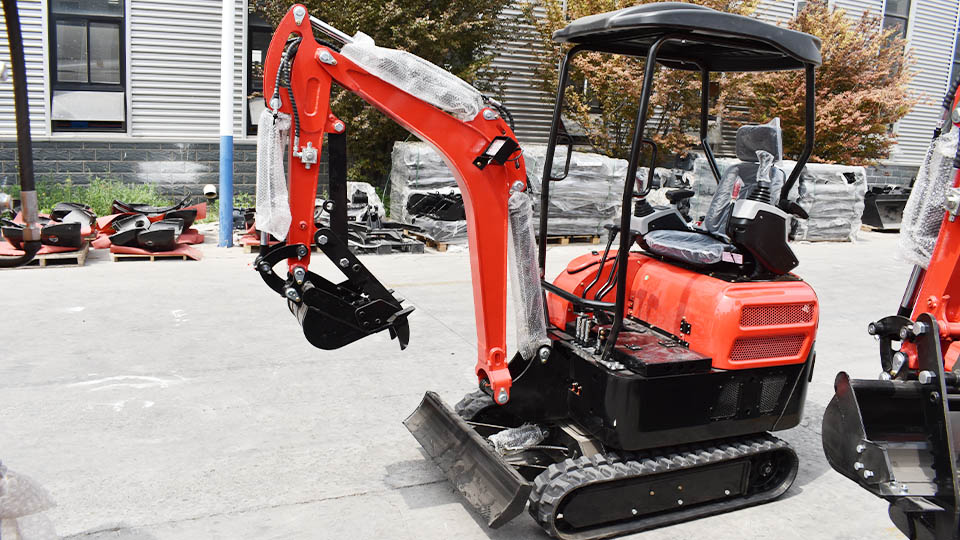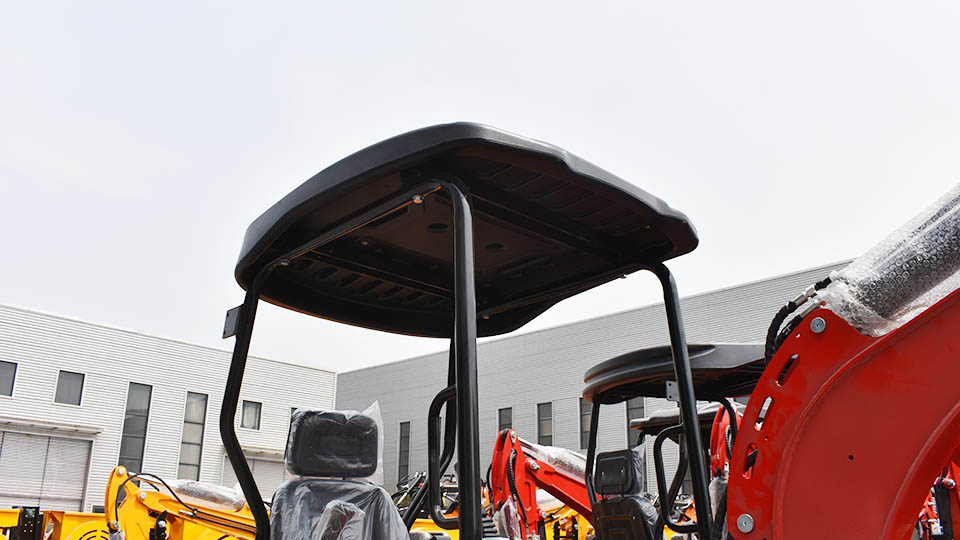The excavator, a ubiquitous icon of construction and earthmoving, is far more than just a digging machine. Its distinctive boom, stick, and bucket assembly, combined with a rotating cab and powerful hydraulic systems, make it one of the most versatile and indispensable pieces of heavy equipment across countless industries. From shaping landscapes and laying foundations to demolishing structures and extracting raw materials, excavators are the workhorses that bring ambitious projects to life.
This article will delve into the diverse real-world applications of excavators, highlighting their adaptability and showcasing compelling success stories where these machines have been central to overcoming complex challenges and achieving remarkable feats.
The Versatility of the Excavator: More Than Just Digging
While excavation—the act of digging or scooping earth—is their primary function, modern excavators, often called hydraulic excavators, are engineered for a much broader range of tasks. Their modular design allows for a quick change of attachments, transforming them from a digging tool into a multi-purpose machine capable of:
Digging and Trenching: Creating foundations, utility trenches, basements, and drainage systems.
Loading and Unloading: Transferring spoil, aggregates, and other materials into dump trucks or hoppers.
Demolition: Breaking down concrete, steel, and other structures using hydraulic breakers, pulverizers, and shears.
Material Handling: Lifting and placing heavy objects with grapples, lifting magnets, and specialized clamps.
Land Clearing and Forestry: Removing trees, stumps, and vegetation with mulchers, rakes, and felling heads.
Dredging: Removing sediment and debris from waterways with long-reach booms and specialized buckets.
Piling and Drilling: Driving piles for foundations or drilling holes for various purposes with augers and vibratory hammers.
Grading and Leveling: Shaping and preparing ground surfaces with grading buckets and blades.
Pipe Laying: Precisely positioning large pipes for water, sewer, or gas lines.

This remarkable adaptability, coupled with continuous advancements in hydraulic power, engine efficiency, and operator comfort, ensures the excavator's enduring relevance in the modern world.
Real-World Applications and Success Stories
Let's explore specific sectors where excavators are in constant "action" and examine instances where their capabilities have truly shone.
1. Urban Development and Infrastructure Projects
Application: Excavators are the foundational machines in urban construction. They prepare sites for commercial buildings, residential complexes, roads, bridges, and underground utilities. Their precision is crucial in densely populated areas where space is limited and existing infrastructure must be protected.
Success Story: The Boston "Big Dig" (Central Artery/Tunnel Project)
This monumental infrastructure project in Boston, Massachusetts, involved rerouting the Central Artery (I-93) underground and constructing the Ted Williams Tunnel. It was one of the most complex and expensive highway projects in U.S. history. Excavators of all sizes, from compact models working in tight urban trenches to large machines clearing massive amounts of spoil, were absolutely critical. They dug deep foundation pits for tunnels and overpasses, excavated vast amounts of earth to create underground highway sections, and carefully positioned pre-cast tunnel segments. The project's success, despite its challenges, relied heavily on the continuous and precise operation of excavators in an extremely challenging, confined urban environment, often inches away from historic buildings and active public spaces.
2. Mining and Quarrying
Application: In mining, excavators are responsible for stripping overburden (the material covering ore bodies), extracting coal, minerals, and aggregates, and loading massive haul trucks. They operate in some of the most demanding and abrasive conditions on Earth. Large hydraulic excavators are particularly vital in open-pit mining.
Success Story: Open-Pit Coal Mine Expansion
Consider a large-scale open-pit coal mine in Wyoming, USA, expanding its operations. The challenge involves moving millions of cubic yards of earth and rock daily to access deeper coal seams. Here, colossal hydraulic excavators, often weighing hundreds of tons with buckets capable of holding tens of cubic yards of material, are the primary production tools. These "ultra-class" excavators, like the Caterpillar 6090 FS or Komatsu PC8000, can fill a 240-ton haul truck in just 3-5 passes. Their continuous, high-volume operation ensures that the mine can meet its production targets, directly impacting global energy supply. The success is measured not just in tons moved, but in the efficiency and reliability these giants provide in a 24/7, high-wear environment.
3. Demolition and Recycling
Application: Excavators equipped with specialized attachments are at the forefront of urban renewal and sustainable waste management. They methodically dismantle structures, segregate materials for recycling, and prepare sites for new development.
Success Story: Deconstructing an Industrial Complex for Urban Renewal
In a city undergoing revitalization, an old, sprawling industrial complex needed to be demolished to make way for a mixed-use development. The complex included reinforced concrete buildings, steel structures, and hazardous materials. Excavators fitted with hydraulic shears meticulously cut through steel beams, while others with pulverizers efficiently crunched concrete into manageable pieces. Long-reach excavators with grapples carefully sorted debris into separate piles for concrete, rebar, wood, and other recyclables, minimizing landfill waste. This systematic and controlled demolition, heavily reliant on the precision and power of excavators with specialized tools, cleared the site safely, quickly, and sustainably, paving the way for a vibrant new community.

4. Environmental Remediation and Restoration
Application: Excavators are crucial in cleaning up contaminated sites, restoring natural habitats, and managing water resources. This can involve anything from removing polluted soil to reshaping riverbanks.
Success Story: Wetlands Restoration Project
In a coastal region, vital wetlands had degraded due to historical industrial activity and altered water flow, impacting biodiversity. An ambitious restoration project required excavators to reshape topography, create new water channels, and re-establish proper drainage patterns. Smaller, amphibious excavators, designed to operate in shallow water and soft ground, carefully sculpted new ponds and berms without causing excessive disturbance. Standard excavators brought in clean fill and placed natural materials like logs and rocks to create microhabitats. The precision of the operators, guided by environmental engineers, allowed for the delicate balance of earthmoving required to bring the ecosystem back to health, demonstrating the excavator's role in ecological recovery.
5. Disaster Response and Recovery
Application: Following natural disasters like earthquakes, floods, or landslides, excavators are often among the first heavy machines deployed. They clear debris, open roads, assist in search and rescue efforts, and stabilize damaged areas.
Success Story: Post-Earthquake Recovery in a Mountainous Region
After a devastating earthquake caused widespread landslides and blocked critical mountain roads, isolating communities, excavators became lifelines. Large excavators, some equipped with rock breakers, worked tirelessly to clear tons of rock, mud, and fallen trees that had buried highways. Their ability to work on steep, unstable slopes was critical. Smaller excavators were used in more precarious areas to carefully remove debris from damaged homes, often assisting in search and rescue by methodically sifting through rubble. The rapid deployment and sustained operation of these machines were fundamental to re-establishing access, facilitating aid delivery, and beginning the long process of rebuilding.
6. Agricultural and Land Management
Application: While often associated with heavy construction, excavators are increasingly used in agriculture for tasks like pond construction, irrigation ditch maintenance, land leveling for drainage, and orchard removal.
Success Story: Farm Pond Construction for Irrigation
A large agricultural farm in a drought-prone area decided to invest in a new irrigation pond to ensure water supply for crops. A mid-sized excavator was deployed to dig the substantial basin. Its precise hydraulic controls allowed the operator to create specific depths and slopes for optimal water retention and access. The excavator also efficiently loaded the excavated spoil onto dump trucks for use elsewhere on the farm. This project, while seemingly simple, was crucial for the farm's long-term sustainability, demonstrating the excavator's role in modern, efficient agricultural practices.
7. Arctic and Extreme Environment Operations
Application: Operating in the Arctic requires specialized equipment designed to withstand extreme cold, permafrost, and remote conditions. Excavators modified for these environments are essential for resource extraction and infrastructure development.
Success Story: Building an Ice Road in the Canadian Arctic
In Canada's remote northern territories, excavators equipped with winter packages (including arctic-grade hoses, heated cabs, and specialized lubricants) are used to build and maintain temporary "ice roads" over frozen lakes and tundra. These roads are vital for transporting heavy equipment and supplies to isolated mining sites during the brief winter window. Excavators break through thin ice, clear snow, and meticulously grade the frozen surface to ensure a smooth, safe passage for heavy trucks. Their reliability in sub-zero temperatures and ability to work with precision on a delicate surface like ice highlight their engineering prowess and critical role in challenging logistics.
The Human Element: Skilled Operators
Behind every excavator success story is a highly skilled operator. Their ability to precisely control the machine's complex hydraulics, interpret site plans, adapt to changing conditions, and prioritize safety is paramount. Modern excavators often feature advanced telematics, GPS, and automation features, but the human element remains irreplaceable for nuanced tasks and problem-solving in dynamic environments.
Conclusion
The excavator's journey from a basic digging machine to a multi-functional powerhouse is a testament to continuous engineering innovation. Its real-world applications are as diverse as the landscapes it shapes and the industries it serves. From the deepest mines to the highest construction sites, from disaster zones to meticulously restored wetlands, excavators are in constant action, driven by powerful hydraulics and guided by skilled operators. The success stories outlined above are just a glimpse into the myriad ways these magnificent machines contribute to progress, overcome challenges, and ultimately, help build a better, more resilient world. As technology advances, the excavator's capabilities will undoubtedly continue to expand, ensuring its vital role for generations to come.
Post time:Sep-25-2020
